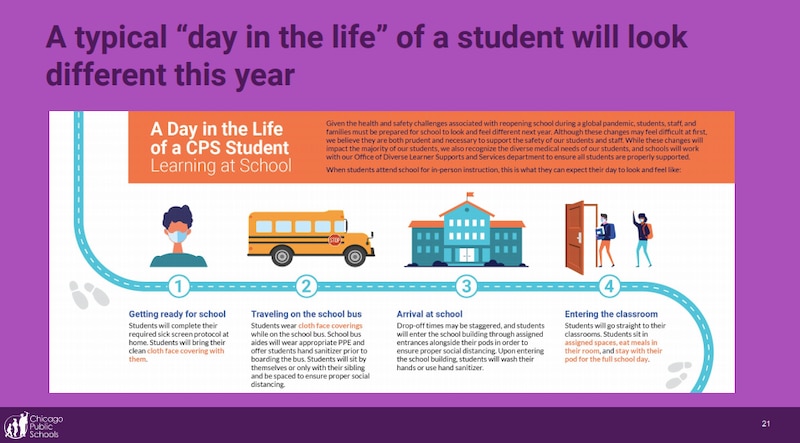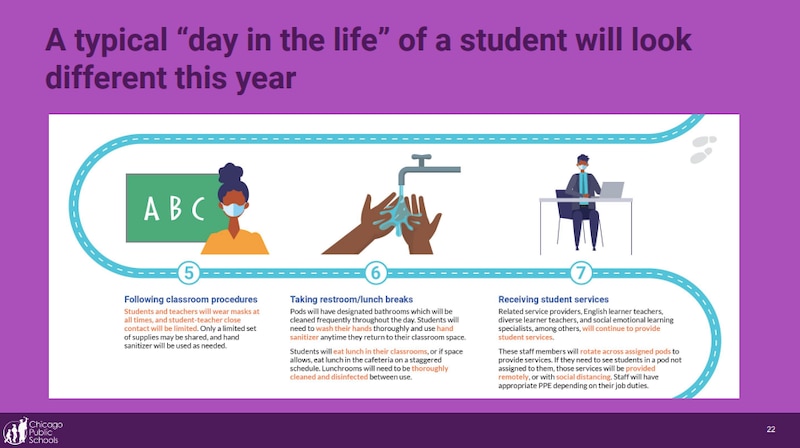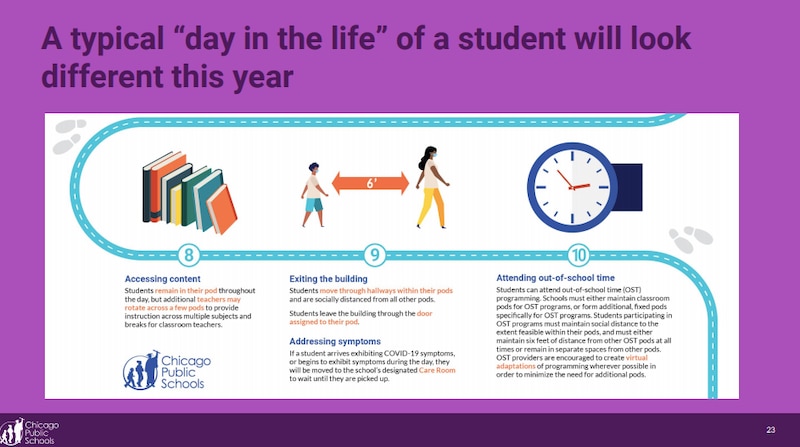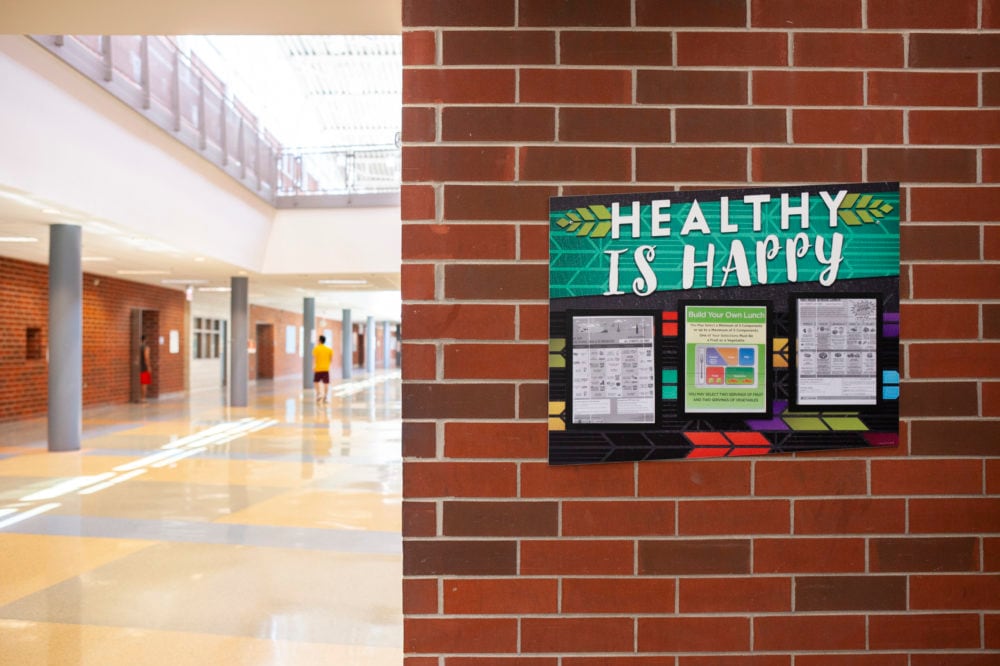Chicago families venturing into schools this fall can expect school-based contact tracing, extra disposable face masks, and bathroom breaks by pod. But they’re unlikely to find broad-based COVID-19 testing for students, and families won’t be able to switch in and out of remote learning in the middle of the semester.
As district preparations for an unusual first day of school move ahead, Wednesday’s school board meeting offered more details into planned safety measures for those students who plan to return to school buildings this fall.
“If schools are able to open this fall, many new protocols will be enacted,” chief health officer Kenneth Fox said at Wednesday’s board of education meeting.
Chicago Public Schools announced last week they will offer a hybrid learning model to Chicago families, which will reopen their buildings for in-person learning at least part time, with pre-kindergarten and some special education students allowed to attend school full time.
Critics of the plan include the city’s teachers union, which has questioned whether any in-person learning can be safe and called for the district to start the fall with remote learning. On Wednesday they staged a car caravan, which ended outside the board meeting, and launched a social media campaign using the ironic hashtag #MakeItMakeSense.
The district’s tentative plan opens up a bevy of safety concerns, some of which the district has begun to publicly address.
In a report released last week, the district said it is taking a slew of measures to curb infections in its school buildings: grouping students in pods of roughly 15 students with spaced-out assigned seating, requiring face masks and daily temperature checks, hiring 400 additional custodians to deep clean schools, and more.
And Chicago will allow any family to opt out of in-person learning altogether — even if students do not have medical conditions that make them especially vulnerable.
The new details discussed Wednesday give some insight into school contingency plans if a student in a school becomes sick or if a family decides to opt in or out of in-person learning during the school year.
Here are some of the latest details released Wednesday:
- Before entering schools, any student, teacher or visitor will have to fill out an online symptom screening questionnaire.
- Each student or teacher entering school buildings will receive three reusable face coverings purchased by the district. Schools will also have a supply of disposable face coverings for students who don’t bring their own.
- If a student becomes sick, each school will have a separate room where students can be isolated until a guardian can take them home.
- There is no plan to regularly test students and staff members for the coronavirus, said Fox, but he encouraged families to access free testing sites run by the city or at local hospitals.
- Families can opt into in-person schooling, but only between semesters to avoid breaking the safety created by the district’s pod system.
A visualization shown Wednesday illustrated a student’s daily path through school and highlighted the points at which a student would be reminded to wear a mask or offered hand sanitizer: on the bus to school, going back and forth from the classroom, and eating lunch at their desk.
Most of a student’s day, according to the graphic, would take place at their distanced desk. That includes the bulk of learning, any special services or supports, and meals.
That plan may look different depending on the school and grade-level of a child, district officials said, but they promised to give schools templates to assist in the logistical challenge of creating an entirely new scheduling system.
Still, even as an initial sense of what the school day will look like becomes clear, the district’s plan is still very much in the works. Chicago said it will release a final school reopening plan with input from a family survey being shared now, as well as five public meetings scheduled next week.
During a conversation with Chicago health commissioner Dr. Allison Arwady, Jackson stressed that the district would follow health guidance and close schools if necessary. “When we created this plan flexibility was central,” she said.
Arwady suggested schools could shut down entirely if Chicago reached 400 new cases a day, as shown by the number of people being tested - right now it’s at around 200 cases a day.
During Wednesday’s board meeting, board members said they appreciated the difficult decisions that the school district - and families - will have to make about how to navigate in-person school next fall. “This is difficult, and there are no good choices,” board member Elizabeth Todd-Breland said.
Jackson, for one, said she was planning to send her kids back to school in the fall, but acknowledged that she was doing so with a high level of anxiety amidst the uncertainty wrought by the virus. “I am just as annoyed and frustrated as you are,” she said, speaking to parents.
During public comments at the meeting, Raise Your Hand, a parent group, pressed the district to give more concrete metrics about how school officials were making their reopening decisions. “Currently, CPS is asking parents to take a ride with them,” president Jianan Shi said Wednesday. “Parents want to know way more before getting in the car.”
That request was echoed in a focus group of 21 families conducted by the district ahead of this month’s board meeting, where families asked to better understand how the district would make decisions moving forward.
Chicago Public Schools will host five virtual public meetings to solicit feedback on the reopening plan. The meetings run Monday July 27 through Friday July 31. Click here for registration information.









